Salt Water Sportsman hit the road with his flats skiff in tow at the peak of tarpon season. The destination? Big Pine Key in the Lower Florida Keys, where he expects to find beautiful flats, crystal clear water and, of course, lots of tarpon.
But he experiences more than that during his trip down south, and here he shares some of the sights that made it memorable.
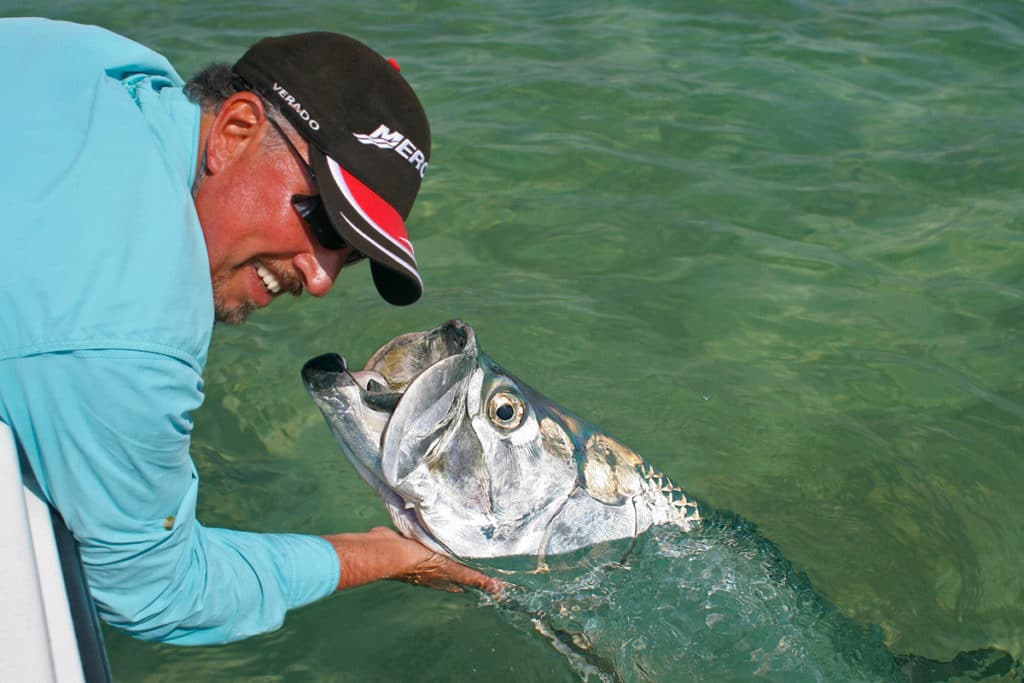
With many tarpon seasons under his belt, Alex knows late May to early June, the peak of the migration in Florida, is the best time to head down to the Keys to get in on the world-class silver king action.
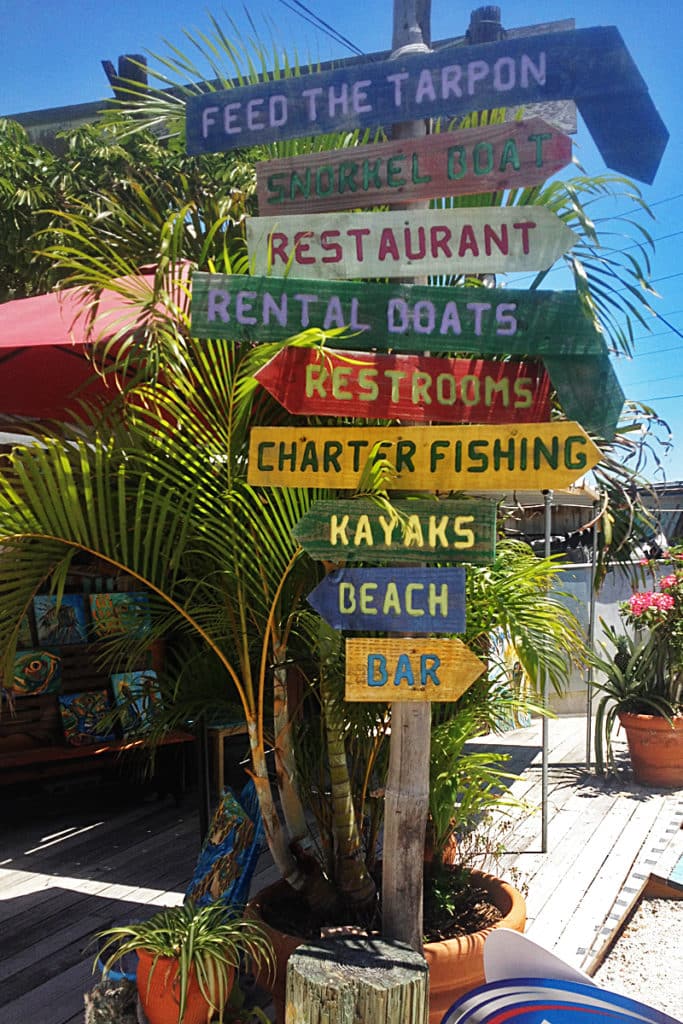
In the Florida Keys, you find everything you need for a fun time on and off the water. Colorful bars abound and they are great places to cool off, tell fish stories and relive exciting angling experiences.
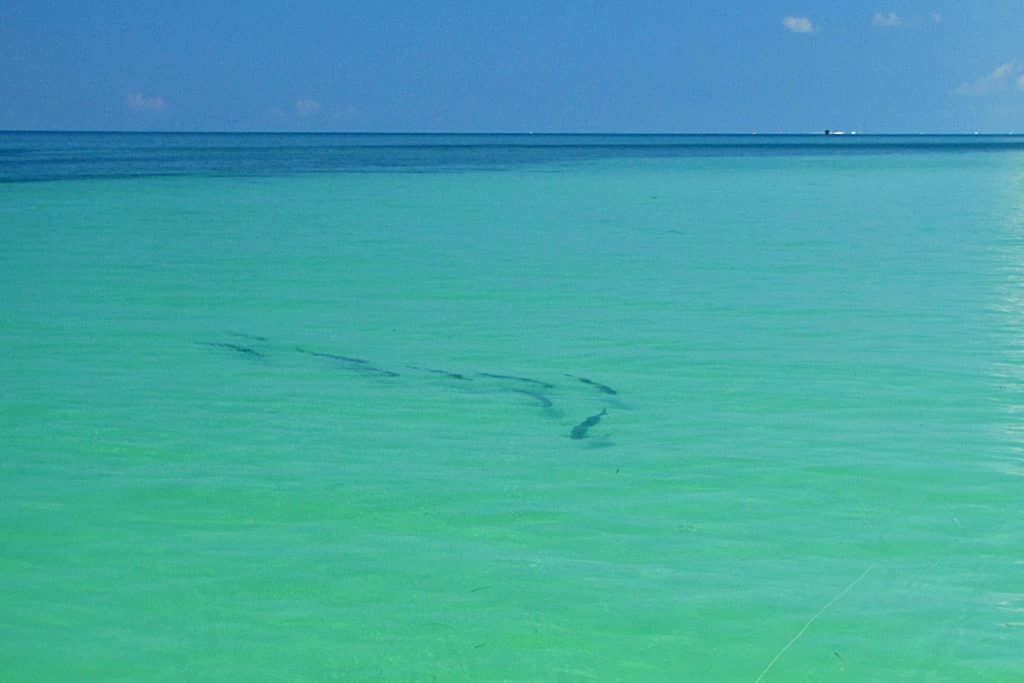
The turquoise waters of oceanside flats are ideal spots to intercept schools of tarpon migrating along the Atlantic coast of the Florida Keys. Incoming fish are easily spotted over light, sandy bottom.
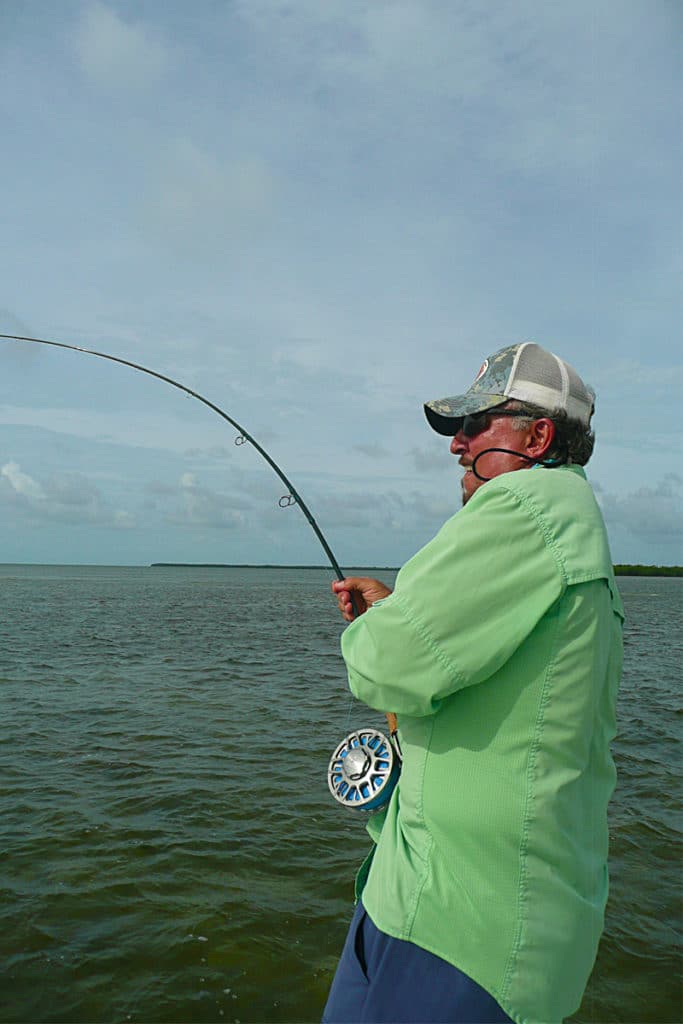
In the morning, when boat traffic is low and the fish remain largely undisturbed, Alex anchors his boat on the edge of a flat in a known tarpon path and waits for some to swim within casting range. Here he battles one after coaxing it to take a fly.
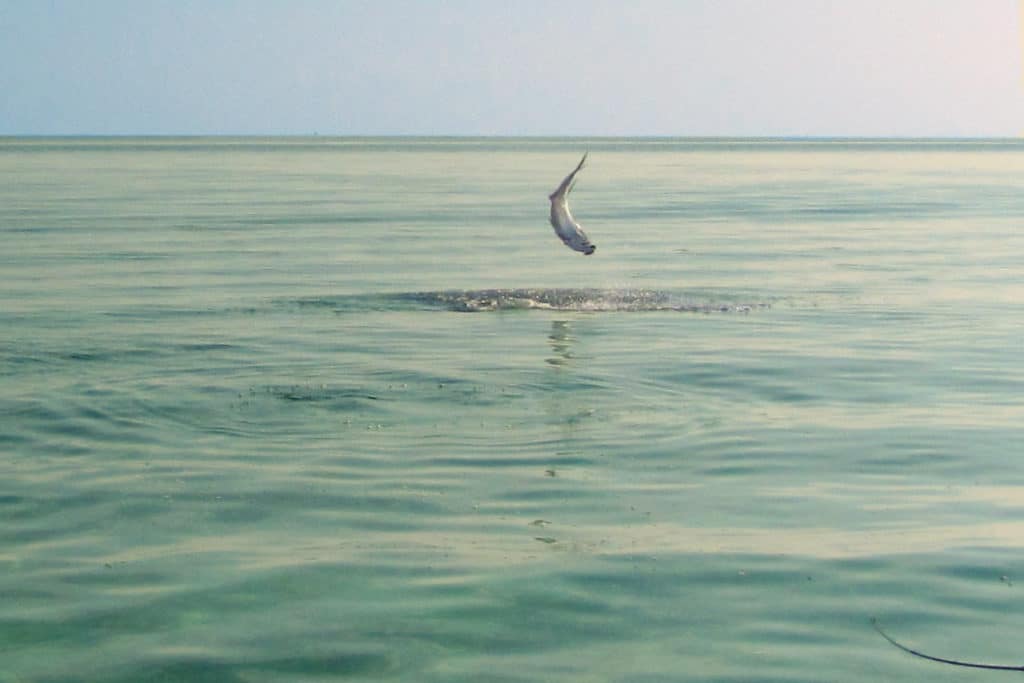
Tarpon are known for their amazing acrobatics, and Alex’s first fish of the season did not disappoint. It went airborne immediately after the hookup.
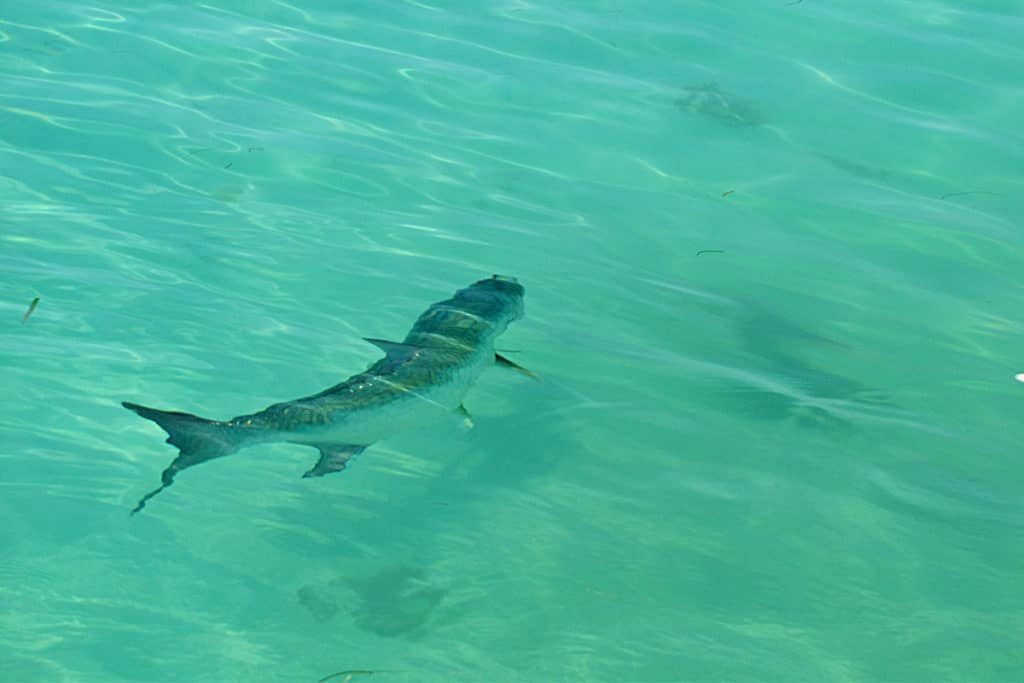
The clear waters that surround the Florida Keys allow anglers to watch a tarpon’s every move, so they can target a specific individual in a school, and strip a fly or retrieve a lure based on the fish’s reactions.
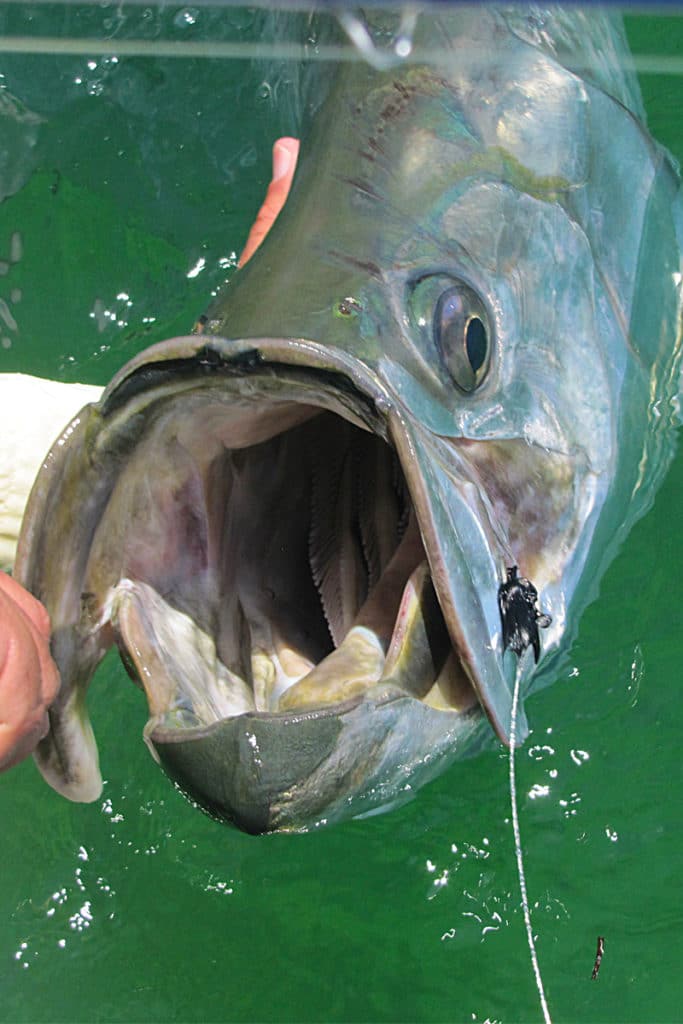
After an exciting 20-minute battle, a Big Pine Key tarpon is finally subdued. Notice the purple-and-black worm fly on the outside of its jaw, the small, slender shape and dark silhouette make it an excellent choice for oceanside fish early and late in the day.
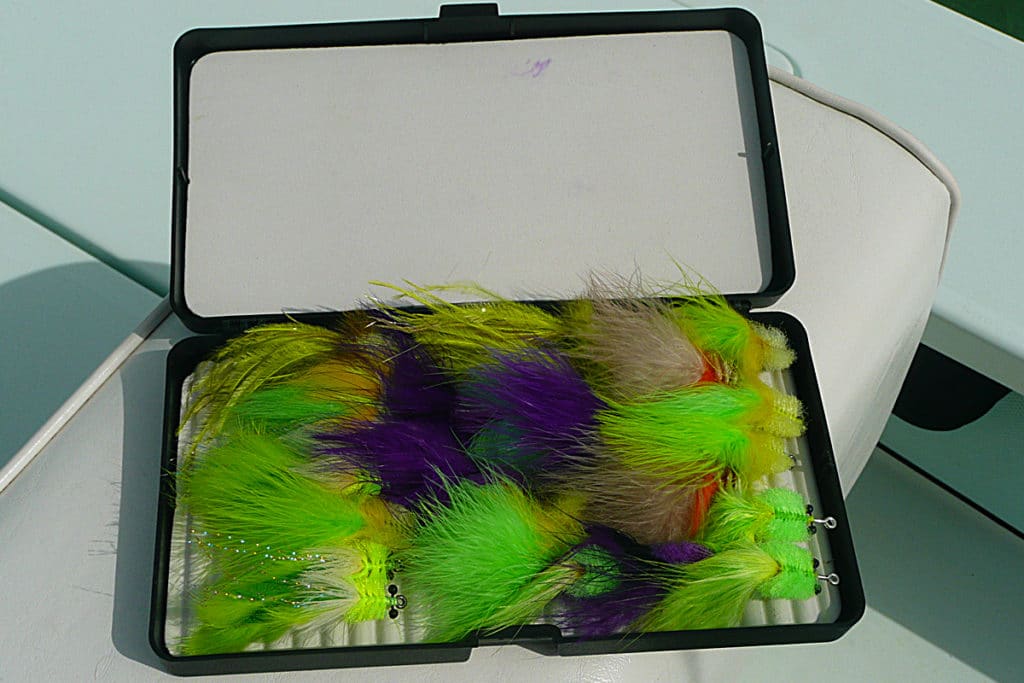
Flies in vibrant and contrasting colors tied with Marabou and rabbit strip, like Alex’s selection of Tarpon Toads, are a must in every tarpon angler’s arsenal.
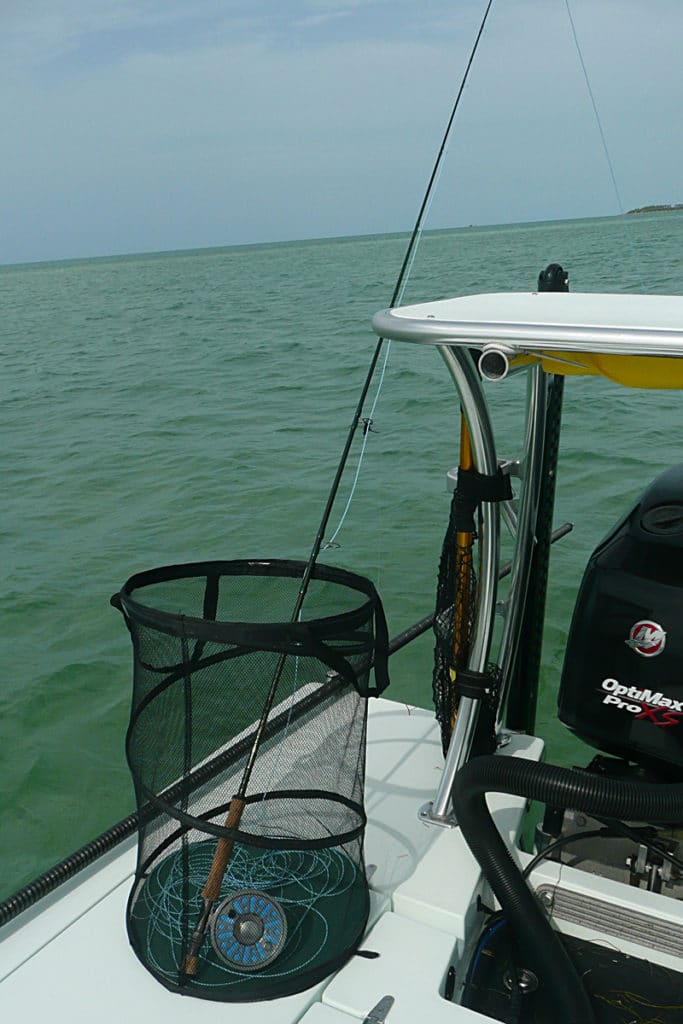
Using a collapsible laundry basket, the angler keeps his fly rod ready to fire a cast at a moment’s notice, with the fly line properly coiled and free from potential snags.
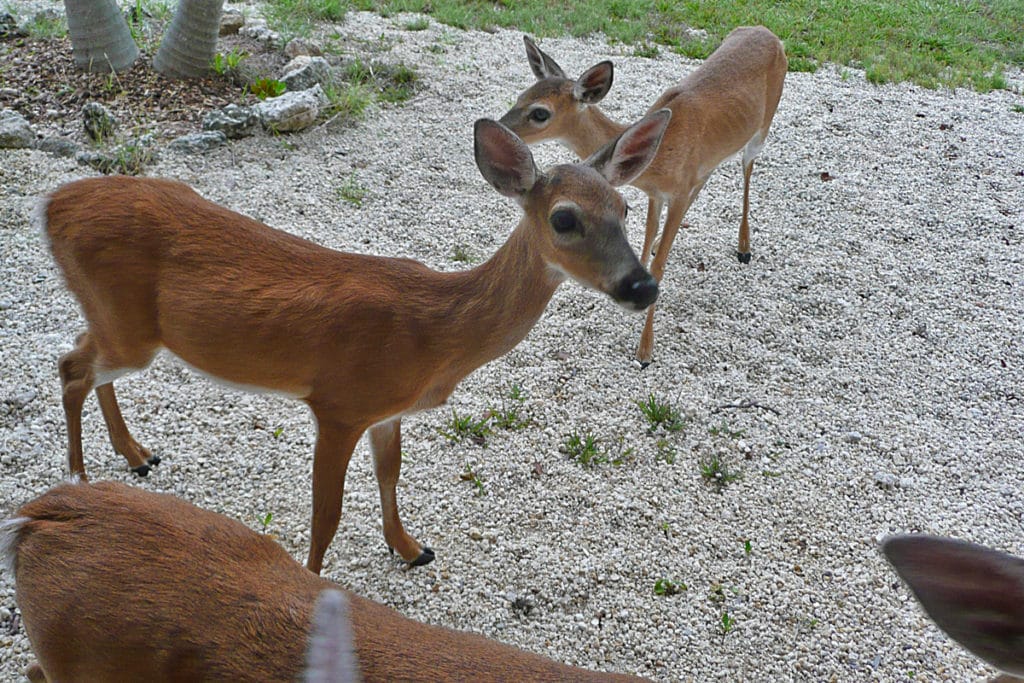
Key deer are a common sight in Big Pine Key, where the National Key Deer Refuge is located. They roam the streets and often feed in people’s yards, so the island has speed limits of 25 to 30 mph to help protect these beautiful animals.

Slightly larger than a dog, key deer are most active early in the morning and in the evening, when it’s common to see many of them up-close. It’s OK to photograph them away from busy roads, however, feeding the deer is illegal and those who do incur a hefty fine.
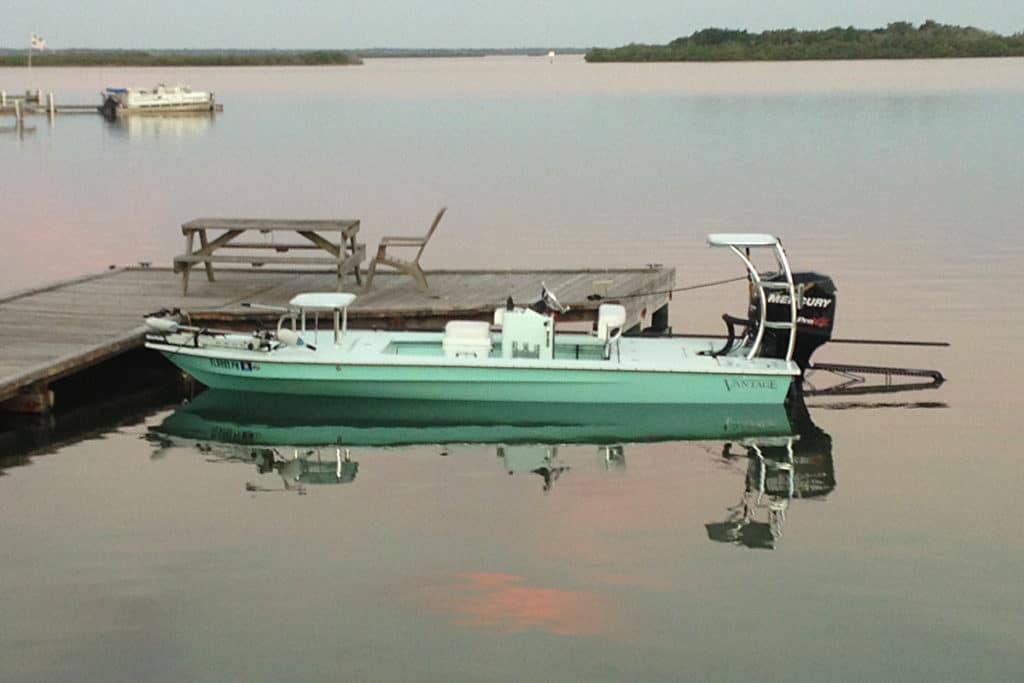
From large resorts to small motels and rental homes, numerous places to stay all along the Keys make it possible to keep your boat in the water. Many waterfront restaurants also have docks where you can tie up while you grab lunch or refreshments.

The Palolo Worm hatch attracts tarpon by the thousands. It takes place during certain tides and conditions, only in a handful of spots throughout the Keys. Alex knows one of the spots and plans his annual pilgrimage based on the most conducive tides. Beforehand, he spends time tying a supply of worm imitations.
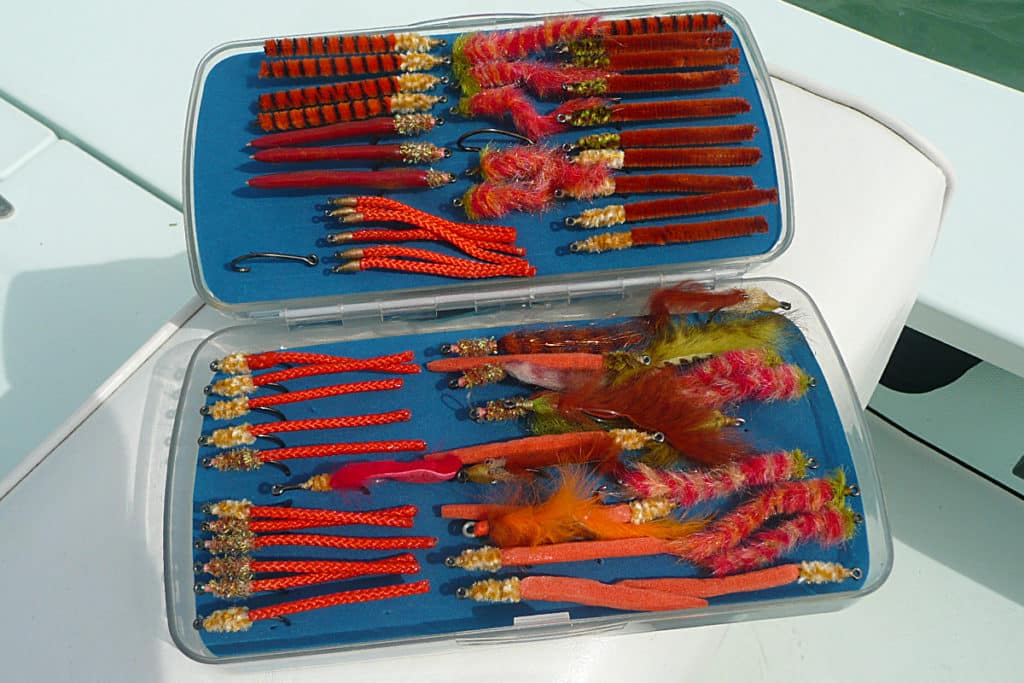
Since there are many variables, the Palolo Worm hatch is difficult to predict. But it’s important to be ready in case it happens. Alex carries a box full of worm imitations and often gets to use many of them.
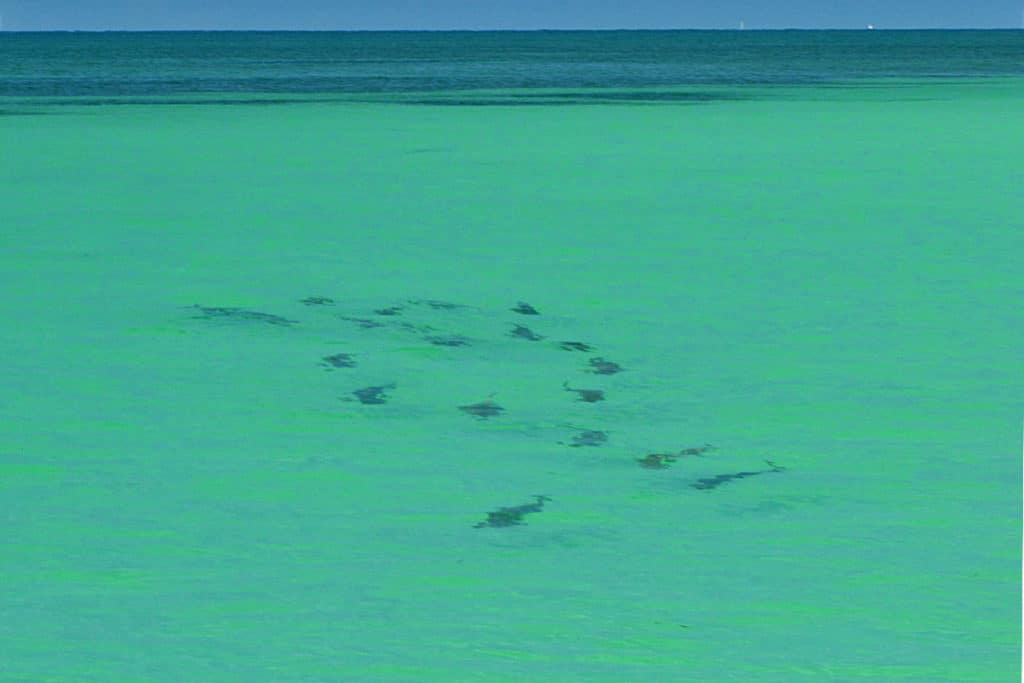
When the tides and conditions are right for a worm hatch, unusually large schools of tarpon acting happy and carefree and traveling in one same direction are often a tell tale sign that the Palolo will launch their mass exodus from the shallows that very evening.
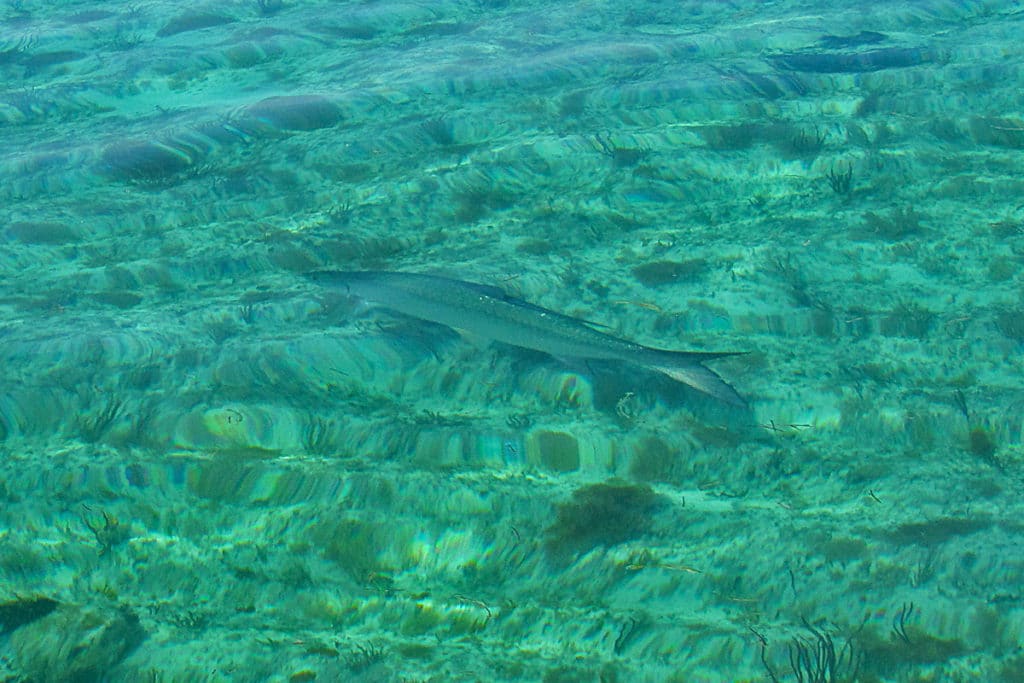
And you don’t see many singles when a worm hatch is about to happen, as most tarpon join large traveling packs making their way toward the nearest location of a hatch.
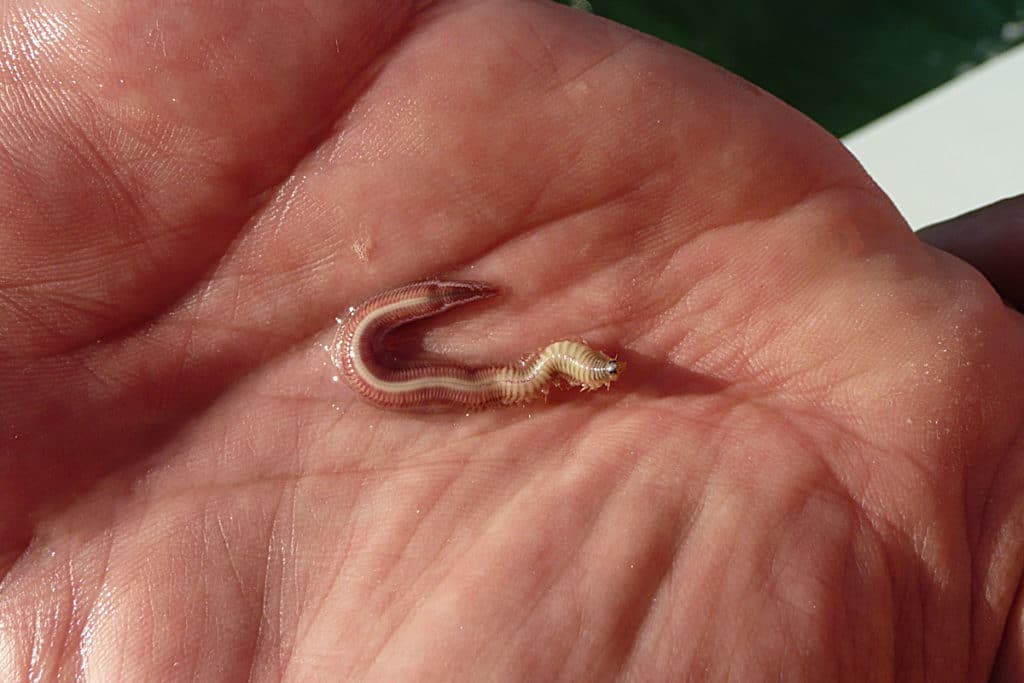
As the angler had hoped, the Palolo Worm hatch went off during his trip to the Lower Keys. It started slowly at about 5:30PM and steadily strengthen as more and more of the tiny burnt orange darts flowed out with the falling current. Alex grabbed a couple to photograph.
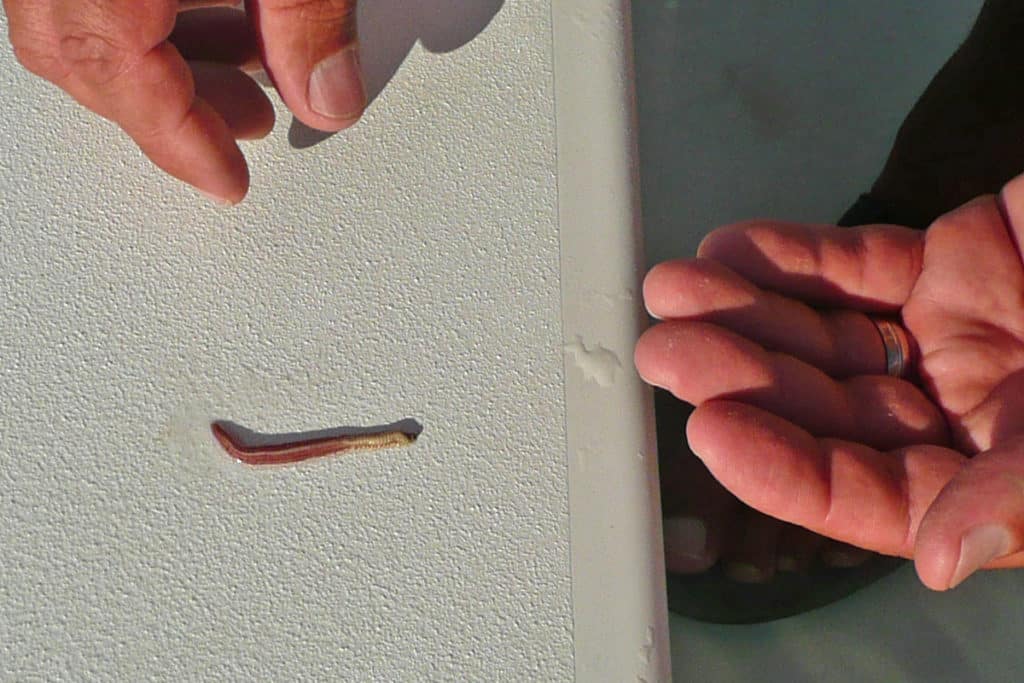
Those who have never witness a Palolo worm hatch find it difficult to visualize the incredible free-for-all that goes on when thousands of tarpon slurp the tiny invertebrates right and left. They also have a hard time gauging the size of the worms, reason why many worm flies are much larger than the real deal.
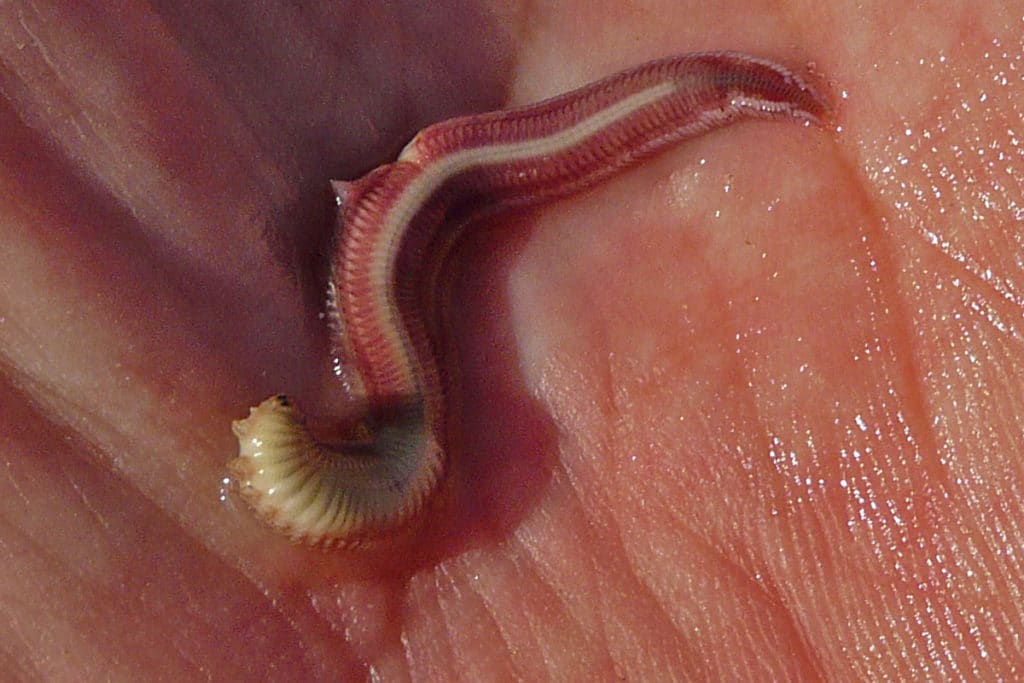
Palolo worms have an olive or off-white head and tiny appendages on the sides that propel them through the water. Despite popular belief, they don’t wiggle. These worms actually swim straight at a steady, and pretty quick pace.
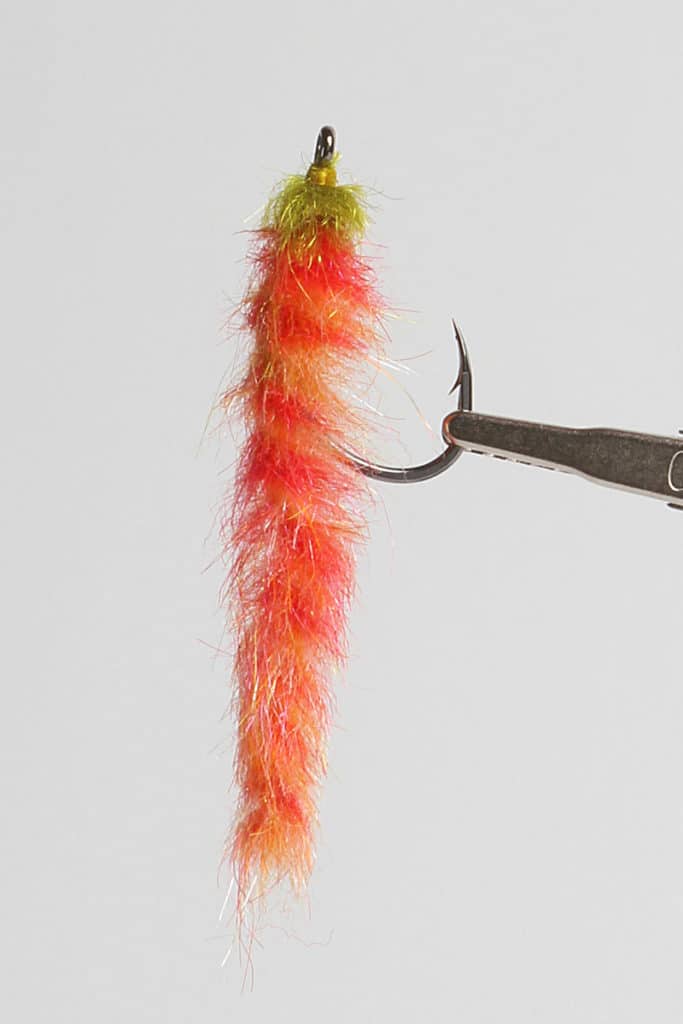
The Chili Pepper worm fly again proved to be the right pattern, and Alex had plenty of them in his fly box. Hours before the hatch even happened, he hooked four tarpon from schools that already had the worm feast on their minds.
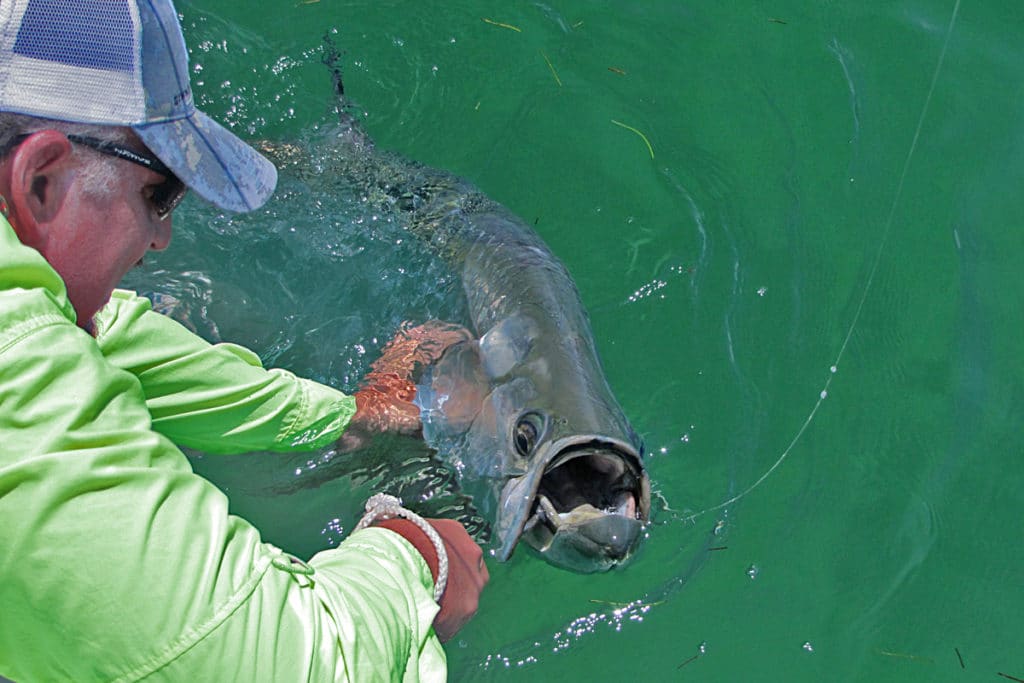
During the worm hatch, if there are several boats anchored or staked out near you, it’s customary to not follow a hooked tarpon. Then, fly anglers often use only 30- or 40-pound shock tippet, so it’s easy to break fish off after a couple of jumps. But this tarpon was hooked hours before the hatch, so Alex chased it and got it to the boat.

Duke, the water-loving Golden Doodle, made the trip to the keys. But he hasn’t yet grasped the concept of stealth. He barks at other boats and at any fish he sees.
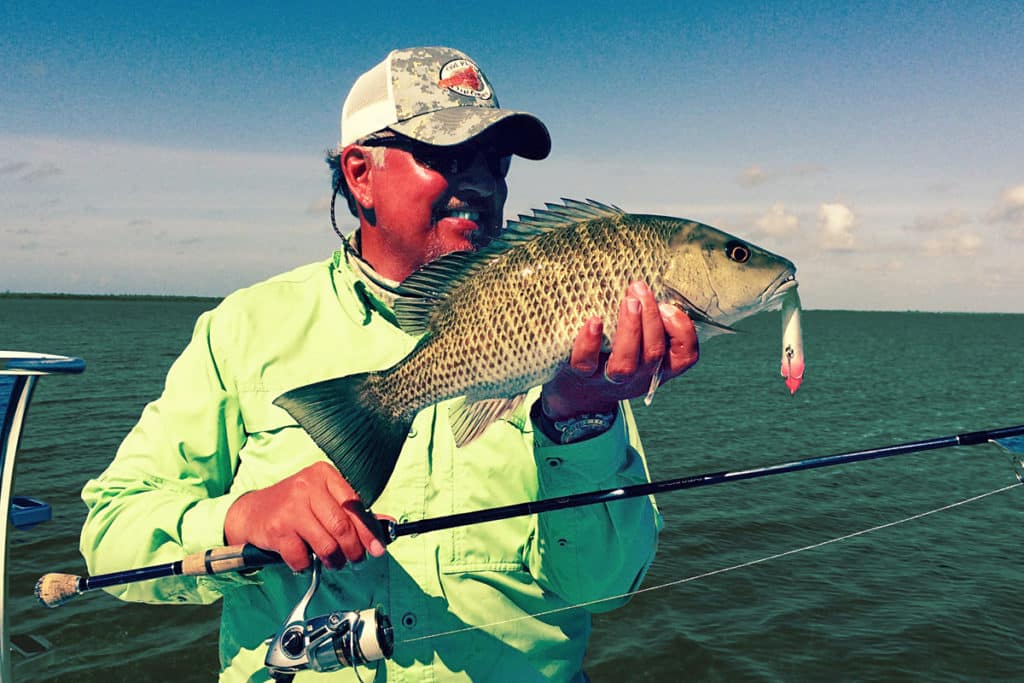
When the wind kicks up and makes it impossible to fish open water for tarpon, the Florida Keys offers many other options. This fat mangrove snapper and couple of others pounced on Alex’s topwater on the lee side of a nearby island.
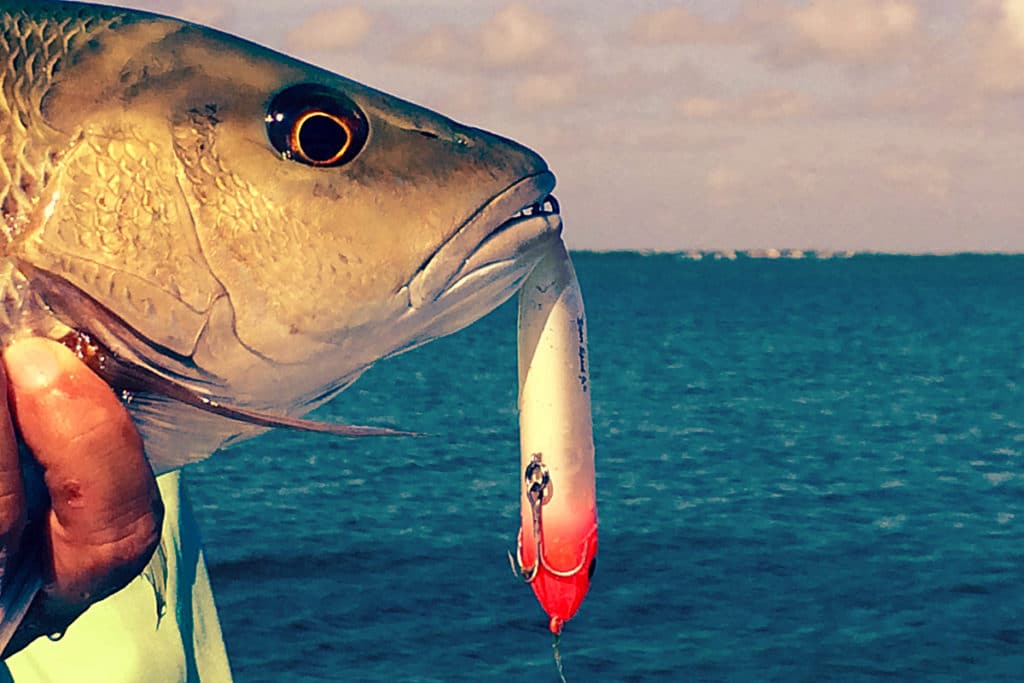
Mangrove snapper are aggressive and often come up from a nearby channel or from under mangrove roots, where they lurk during high tides, to hit a surface lure like this Super Spook Jr.
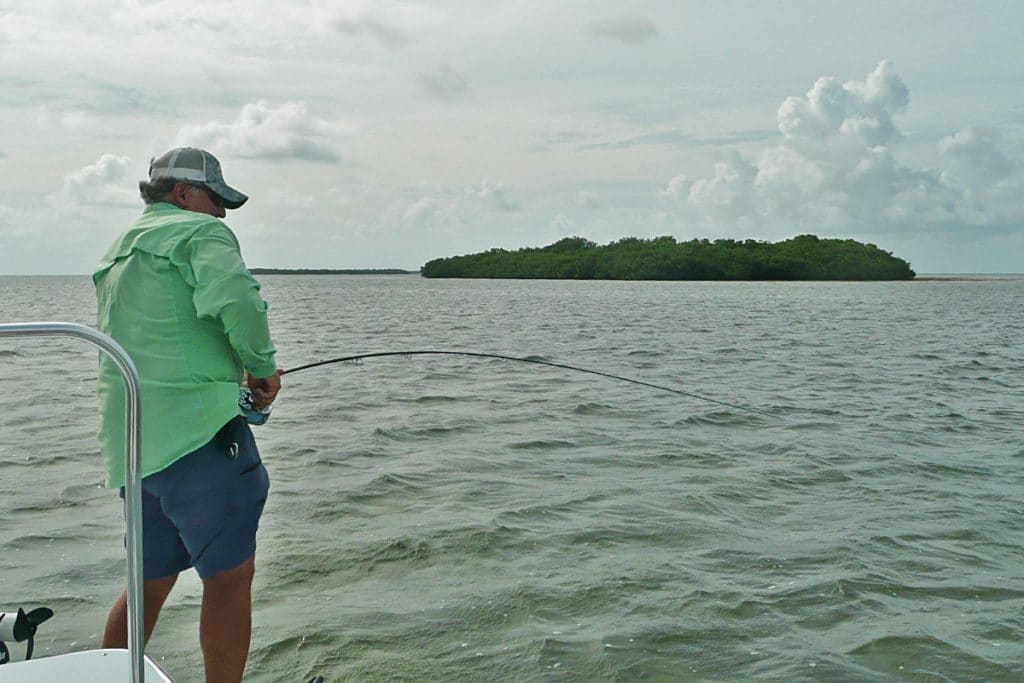
Sharks are another excellent alternative when the weather makes tarpon fishing impossible. Several species roam the shallows and nearby channels in search of prey. A few minutes catching barracuda, jacks or ladyfish provide the chum needed to attract blacktips and sizable lemons, bulls and the occasional hammerhead. Here Alex hooks a big lemon on fly.
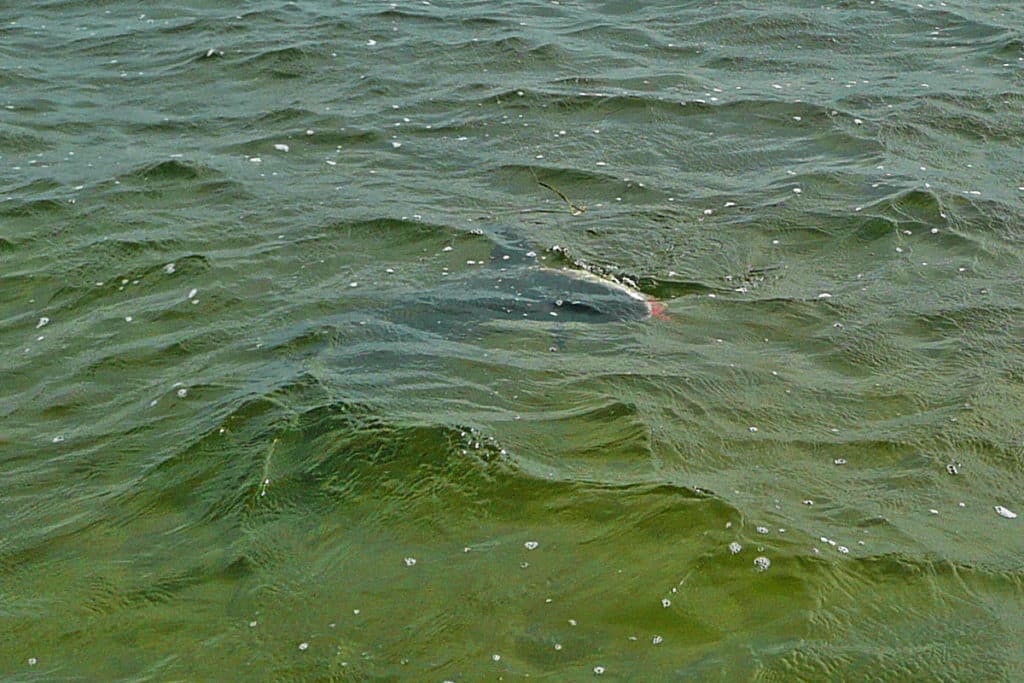
An 8-foot lemon shark comes to the surface trying to shake free of the big fly it ate minutes earlier. It was one of several sharks that responded to Alex’s chum in just four feet of water.
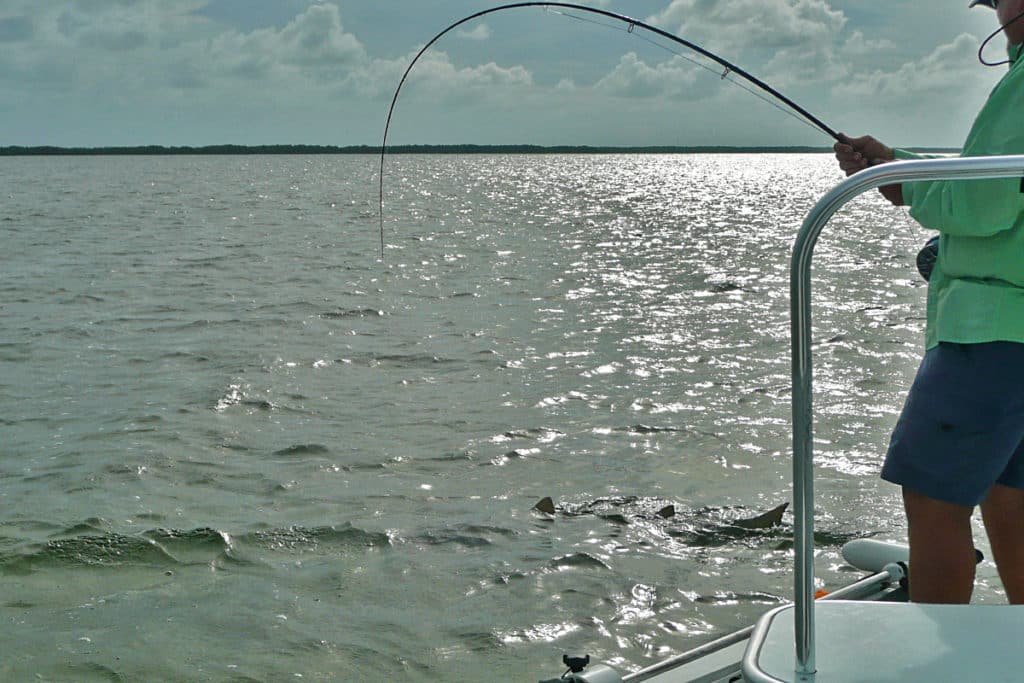
Lemon sharks are most easily identified by their anal fin, which is almost the same size and shape as their dorsal. Here you can see both fins out of the water as Alex pulls on a lemon with a fly rod.
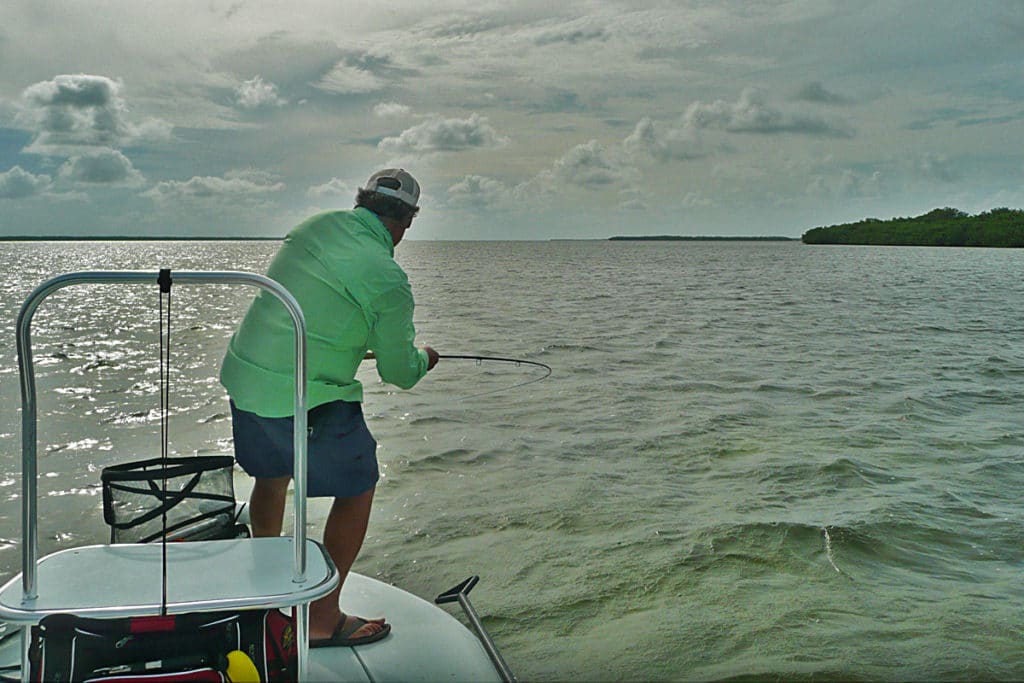
While not as speedy or as acrobatic as the smaller blacktips, lemon sharks often display their brute power by pulling line against the drag and sometimes even pulling the boat.
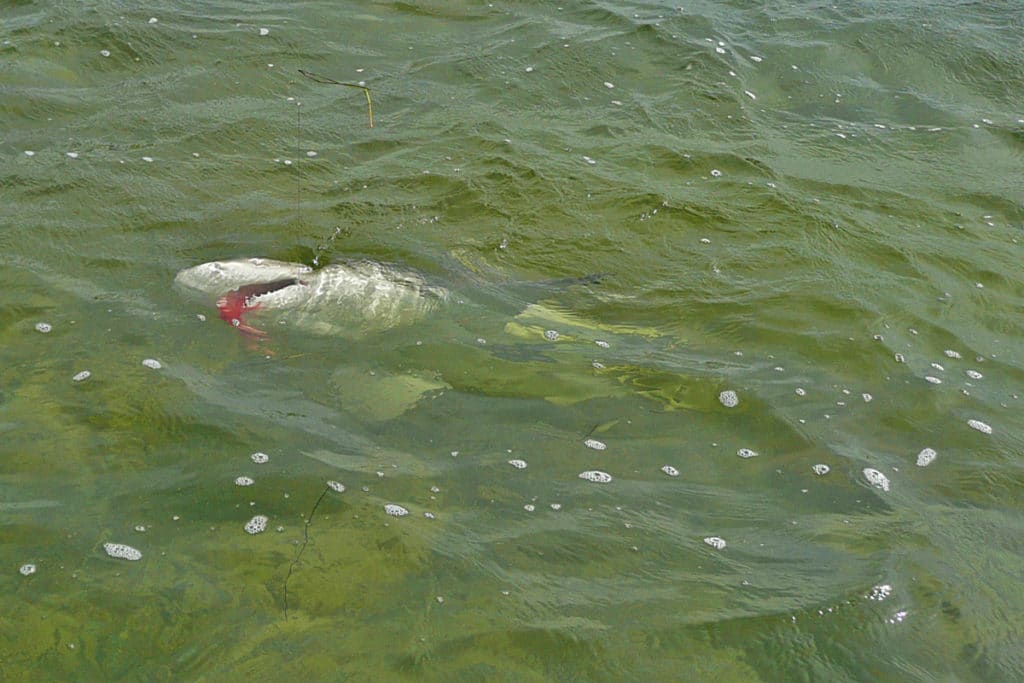
As with other big game species, patience during a tough battle is often rewarded with a tired shark coming to the boat. Here a lemon finally gives up after several powerful runs with many twists and turns.









